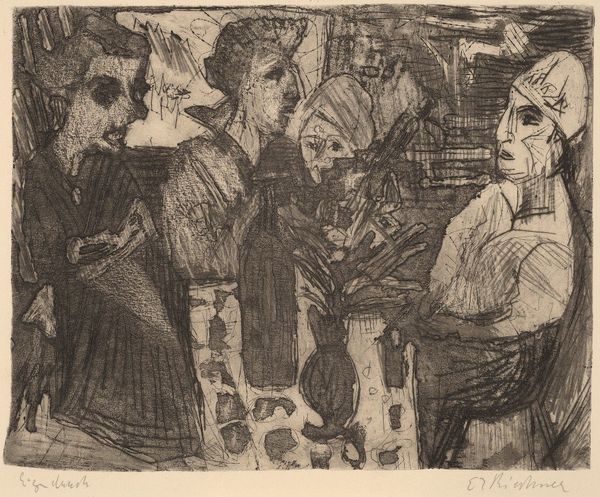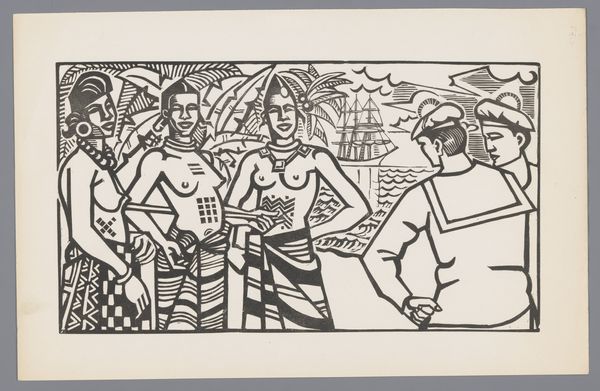
drawing, print, ink
#
portrait
#
drawing
#
pen drawing
# print
#
pen illustration
#
pen sketch
#
ink
#
expressionism
#
cityscape
#
genre-painting
Dimensions: plate: 23.5 × 31.6 cm (9 1/4 × 12 7/16 in.) sheet: 31.7 × 41 cm (12 1/2 × 16 1/8 in.)
Copyright: National Gallery of Art: CC0 1.0
Curator: This is "At the Hairdresser's," a print by Emil Betzler, likely dating from around 1920. It's an ink drawing that reflects the visual language of Expressionism. Editor: My first impression is of organized chaos. It's crowded with figures and details, but rendered in such stark monochrome, it evokes a distinct moodiness. There is something gritty and urgent about it. Curator: The mood definitely comes from the Expressionist style. Notice how the sharp lines and distorted features convey a sense of unease, a certain psychological intensity that was characteristic of art created in response to the first World War and Interwar periods. It’s not simply a scene; it’s a state of mind. Editor: It is interesting how the materials are so fundamental to creating that feeling. Look at the labor invested here to build this print: the process of the artist and the technician, not only depicting but building, an industrialized metropolis of fragmented visual matter. Curator: Indeed, the city itself becomes a character, mirrored in the storefront's window display behind the motorcycle taxi, or "Taxenir," as labeled on its sidecar. The mannequins in the shop mirror the city dwellers—fashionable but perhaps also artificial, reflecting changing roles in society after the war. Editor: Those mannequins are striking. I like how Betzler plays with textures too—the smoothness of the mannequins contrasting against the rough textures of fur and fabrics. There is clearly some playfulness to subvert traditional artistic hierarchies of materials here as well, focusing less on pure artistic ability and more on common consumer culture as subject matter. Curator: And even a bit of humor in that tiny dog near the couple on the left, like a subtle wink amidst all the seriousness. It serves as a commentary on societal pretensions and values. The "cityscape genre painting" becomes a stage for observing ourselves. Editor: This detailed study reveals how art, especially in times of change, incorporates cultural narratives into production processes. What appeared chaotic on the surface reveals organized intentions through material choices and social commentary. Curator: It really brings together so many layers of understanding, revealing complex urban lives a century ago that continue to influence how we see ourselves in the city today. Editor: Indeed, observing its creation unveils so much about an industrialized vision of its time that still reverberates in artistic spaces now.
Comments
No comments
Be the first to comment and join the conversation on the ultimate creative platform.













